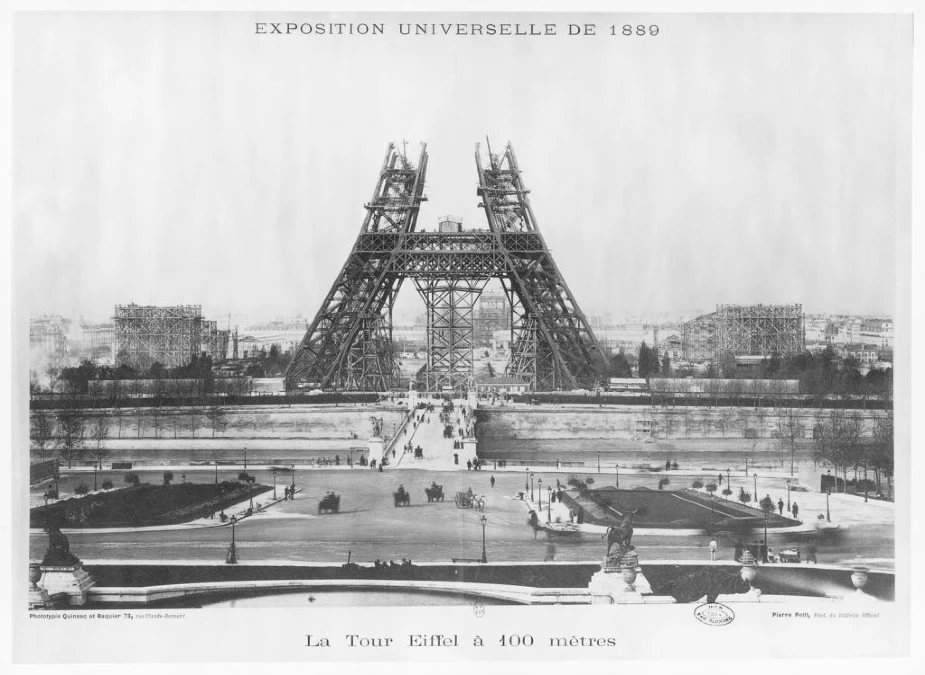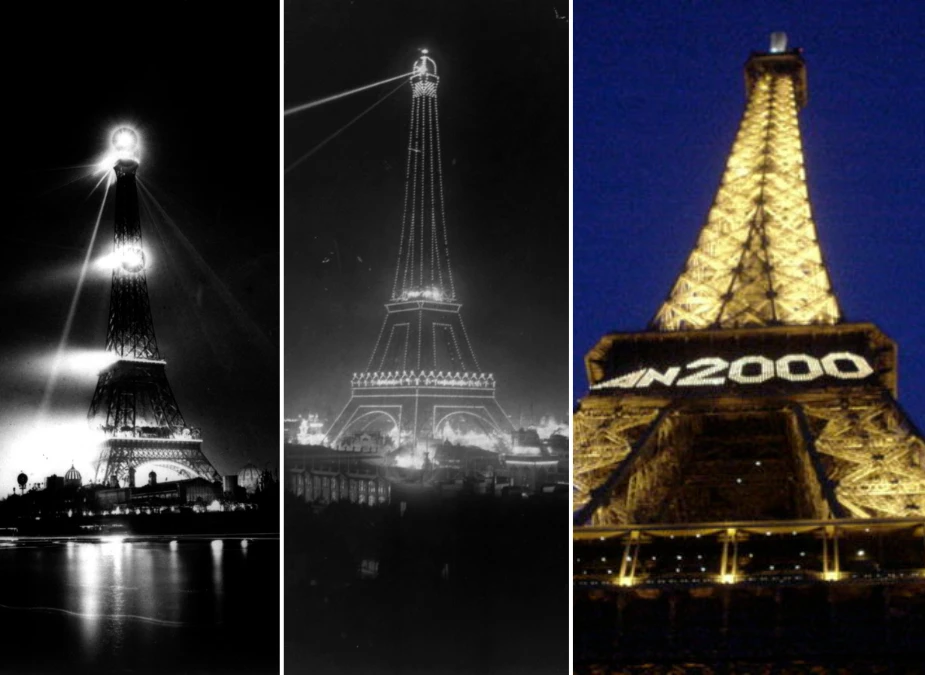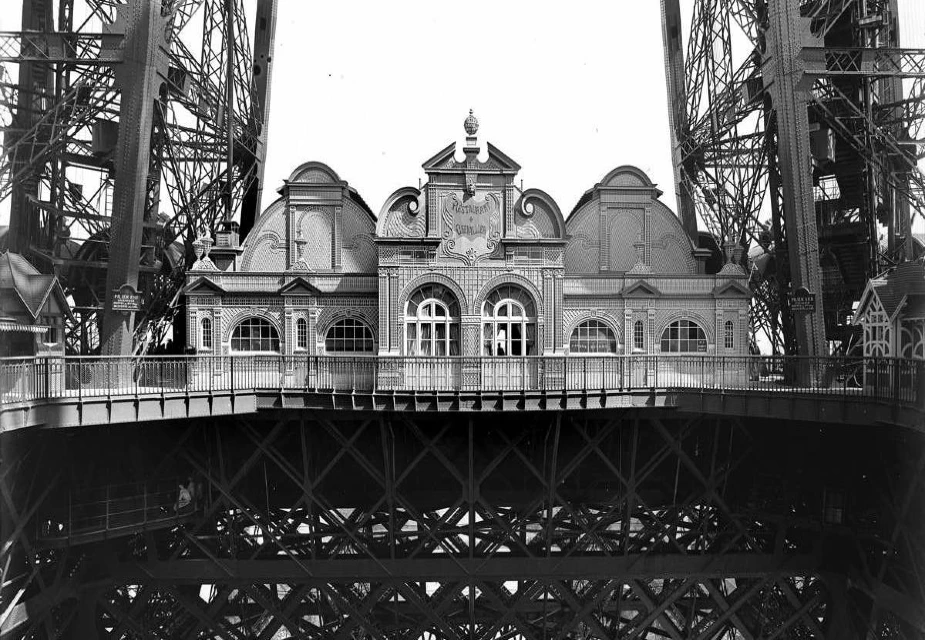The Eiffel Tower is undoubtedly the most famous attraction in the world.
The tower’s beauty compels millions of people to visit this magnificent structure.
This Tower, which spans the sky of Paris for over 127 years, is recognized as well as the pride of Paris, the city of Lights.
One must complete their trip to Paris by stopping at this famous attraction.
It was built between 1887 and 1889 for the World Fair, and since that day, it has never failed to amaze its visitors.
But as fascinating and successful as this attraction has become over the years, The history behind the Eiffel Tower holds a story of its own.
This tower has a lot to tell, from the design selection to the renovations.
A brief history of the Eiffel Tower:
Initially known as the Tour Eiffel, it was built for the 1889 world fair, held in recognition of the french revolution’s 100th commemoration.
More than 107 designs were proposed to build a structure to represent France’s power and industrial abilities.
Out of these 107 proposals, Gustave Eiffel’s idea was selected.
Gustave Eiffel, engineer Maurice Koechlin, Émile Nouguier, and architect Stephen Sauvestre were responsible for designing this magnificent iron structure.
To understand the Eiffel Tower origin, understanding all those involved in the building of the Eiffel Tower and the time frame during its construction is essential.
Here is a collection of information showing the Eiffel Tower’s construction development.
Construction Schedule:
- June 1884: The idea to build an iron tower standing 300 meters was formulated.
- 28th January 1887: The Construction of the Eiffel Tower begins.
- 1st April 1888: The first floor finished.
- 14th August 1888: The second floor was finished.
- 31st March 1889: The third and last stage when the construction was completed.
On March 31, 1889, the Eiffel Tower was officially opened. Gustave Eiffel climbed its 1,710 stairs and stood at the top, proudly waving the French tricolor flag.
Key Figures:
Design:
- 18,038 Metallic Parts
- 5,300 Workshop Designs
- 50 Engineers and Designers
Construction:
- 150 workers in the Levallois-Perret factory
- 150 to 300 workers on the construction site
- 2,500,000 rivets
- 7,300 tonnes of iron
- 60 tonnes of paint
- 5 lifts
Duration:
- 2 years, 2 months and 5 days of construction
Design of the Eiffel Tower:
In 1884, Emile Nouguier and Maurice Koechlin designed a tower with four columns of lattice work frames connected by metal frames at regular intervals.
On September 18, 1884, Eiffel filed a patent for “a new configuration allowing the construction of metal supports and towers capable of topping a height of 300 meters.”
After this, Gustave Eiffel, Maurice Koechlin, Emile Nouguier, and Stephen Sauvestre submitted the winning design for the tower, which had a square base of 125 meters and was selected from 107 entries.
Hurry Up!
Get Your Eiffel Tower Summit AccessA Unique First Edition:
The Eiffel Tower was initially designed with various decorative elements, such as stone bases, massive curves, glass-walled rooms, and a bulb-shaped top.
However, only a few decorative elements, like the huge pillars at the base, were preserved in the final design, which was modified.
The Construction:
The construction work for the Eiffel Tower started on 26th January 1887.
A team of 72 brilliant scientists, engineers and mathematicians came together to build this majestic tower.
All these 72 names are engraved on the tower as a sign of respect.
The tower’s design is inspired by the Latting Observatory of New York, built-in 1853.
Gustave Eiffel and his team did a lot of research and studies to erect a tower that could withstand the winds at such a height.
It took 2,500,000 rivets to hold 18,038 iron parts, accurate to a tenth of the millimeter, to erect this magnificent structure.
Every iron piece used in the tower was specially manufactured in Gustave Eiffel’s factory located at Levallois-Perret on the outskirts of Paris.
The construction began with the creation of concrete foundations to support the base of the iron pillar.
It took five months to construct the foundation, followed by the next twenty-one months to complete the summit.
After a long wait of two years, two months, and five days, counting from 26th January 1887, the Eiffel Tower was finally ready to be inaugurated at the 1889 World fair, the Exposition Universelle.
Because of its iron structure, the tower became named ‘La Dame de Fer’ or ‘The Iron Lady.’
Criticism faced:

The history of the Eiffel Tower involves an initial criticism.
Gustave Eiffel, in the year 1885, presented the tower’s design before the Société des Ingénieurs Civils for approval.
After many debates and social discussions, the committee responsible for organizing the Exposition Universelle approved the design in 1886.
Not that the one-year waiting period was sufficient, but the tower was also criticized by many prominent personalities.
Listed below are some big names from different reputed professions who stood against the construction of the Eiffel Tower.
- Poets: François Coppée, Leconte de Lisle and Sully Prudhomme
- Writer: Guy de Maupassant and Alexandre Dumas’ son
- Artists: William Bouguereau, Ernest Meissonier, Charles Garnier (architect of the Opera), and Charles Gounod (Composer)
These people criticized the Eiffel Tower as a monstrous giant structure erected straight in the heart of Paris.
They believed it would be a destruction of the aesthetic nature of Paris.
However, this outrage and denial phase did not last long, and the project soon moved to start the Iron Lady’s construction.
Architectural History of the Eiffel Tower:
The Eiffel Tower was initially called ‘The Iron Lady’ due to its iron structure construction held together with rivets.
Each part was created in a different place and brought by horse carriage to the building site for assembly.
The skilled bridge builders who created it took wind resistance into consideration against criticism that it failed to conform to engineering principles.
Its solid base and curving arches were built to resist high winds.
The Tower was built over two years and two months and remains today, proving its builders were right.
A Multifunctional Hub:
In 1909 The Eiffel Tower’s license was extended since it became a suitable location for scientific investigations.
Gustave Eiffel asked scientists to use the Tower for meteorological, aerodynamic, and other investigations because he wanted it to be beautiful and valuable.
Another purpose of Eiffel Tower was that it was used for wireless telegraphy and was important in the world wars.
It is still used for setting up satellite dishes and television antennas and is a part of the Parisian landscape.
Eiffel Tower Lights History:

- Before Electricity:
When the Tower was officially opened in 1889, it was fitted with ten thousand gaslights illuminating it from the ground. At the peak, a beacon was built.
- After Electricity:
In the 1990s, gaslights were replaced with electric bulbs.
The framework of the Tower was lit under the first floor and between the four pillars during the 1937 World’s Fair.
To illuminate the Tower from the outside, 30 spotlights were added. In 1958, 1,290 tiny lights were installed around the Tower to replace them.
- Renovations:
The lighting system was upgraded in 1985, and 336 sodium-vapor lamps were installed within the structure.
20,000 sparkling lights were attached to the Tower’s framework on January 1st, 2000. The four lamps replaced the summit beacon.
Eiffel Tower Restaurants History:

Besides its stunning architecture, the Eiffel Tower history also includes its restaurants, which have been an integral part of the iconic structure’s legacy.
- 1889: The first floor of the Eiffel Tower had four magnificent wooden pavilions at the time of its construction.
There were 500 seats available in each of these restaurants, Flamad, Russian Restaurant, and Brébant.
- 1937: They were torn down in preparation for the 1937 International Exhibition. Two new eateries were added to the newly modified first floor.
- 1980s, La Belle France and Le Parisien again took over the restaurants.
- 1993: The Jules Verne restaurant became a part of the Eiffel Tower.
- 1996: Altitude 95, 95 meters above sea level, was the tower’s newest attraction.
- 2000s: The first-floor restaurant went by the name 58 Tour Eiffel.
- 2022: 58 Tour Eiffel was replaced by Madame Brasserie.
Eiffel Tower Today:
Today, Eiffel Tower is known as the most famous place to visit and the pride of Paris.
It’s an example of France’s extraordinary industrial and architectural excellence to the rest of the world.
It welcomes over 7 million people annually, making it the most visited paid tourist attraction.
However, it was built exclusively for the Expedition Universelle and intended to be demolished after 20 years.
This tower is still standing tall after 130 years and has gained a reputation as the symbol of France.
It took a lot of work to build and many challenges. But ultimately, the history of Eiffel Tower is a success story for Paris and its people.
Suggested article
Featured Image: Toureiffel.paris